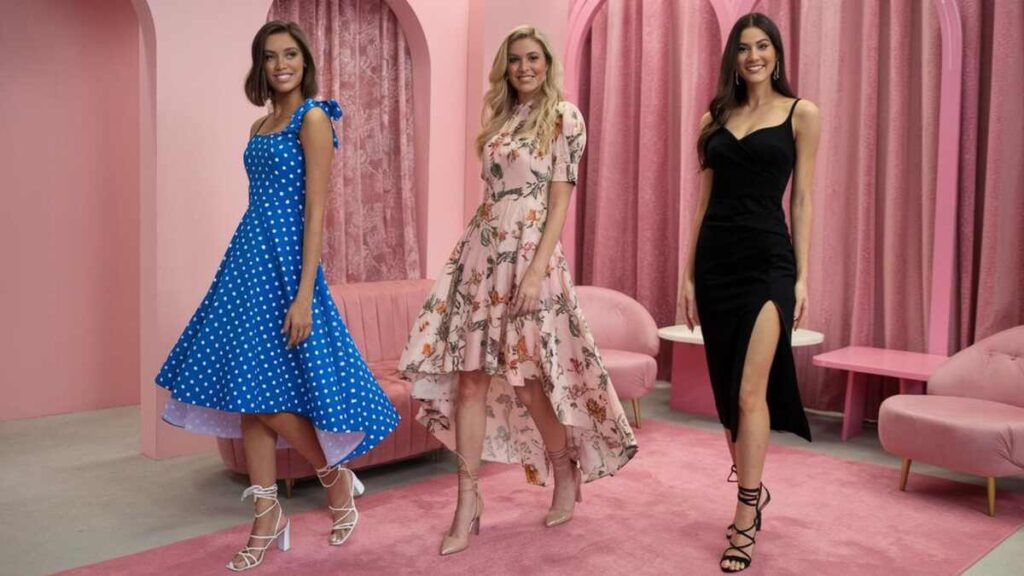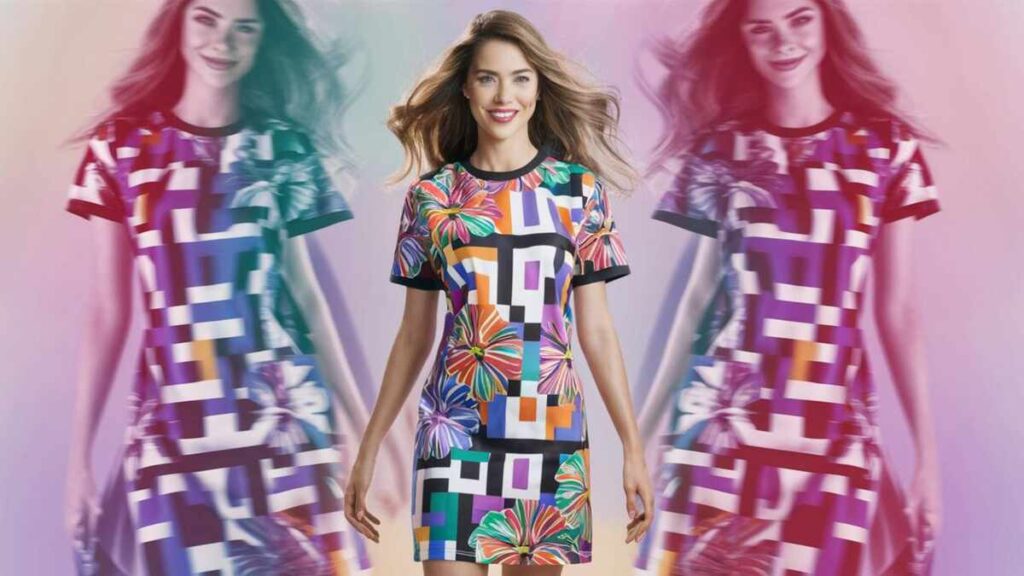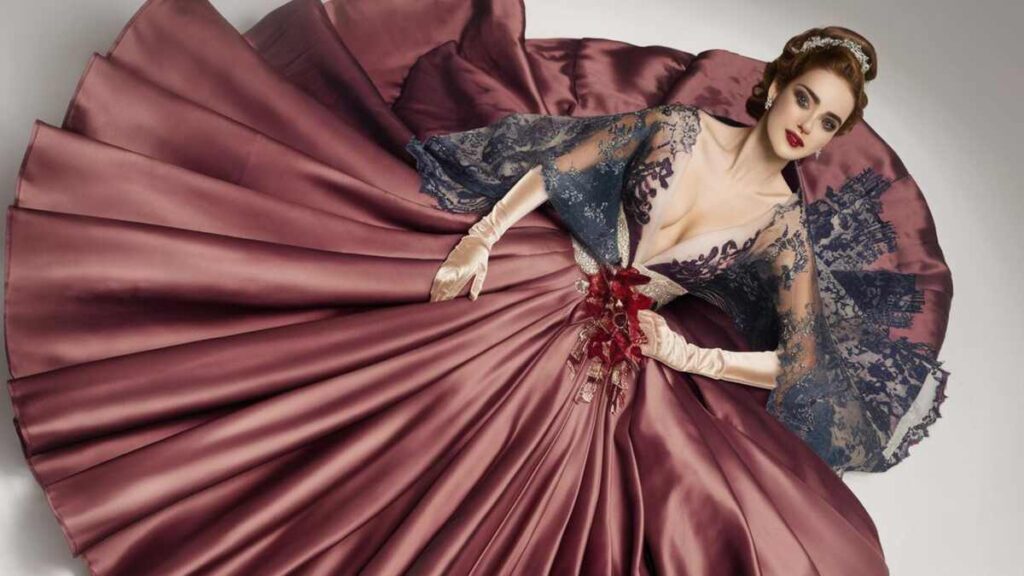The Ultimate Guide to 48 Dress Types: Meanings, Examples, and Styling Tips
In the ever-evolving world of fashion, dresses undoubtedly remain a quintessential element of any wardrobe. From casual day-out attire to show-stopping evening gowns, the variety of dress styles available can be both exciting and overwhelming. Therefore, this comprehensive guide will walk you through 48 different dress types, their meanings, and how to style them for various occasions. Whether you’re a fashion enthusiast or simply looking to expand your sartorial knowledge, this article will serve as your go-to resource for all things dress-related.
Introduction: The Fabulous World of Dresses

Dresses have been a staple in fashion for centuries, evolving from simple tunics to intricate designs that reflect cultural, social, and personal expressions. Indeed, the power of a well-chosen dress cannot be overstated it can boost confidence, make a statement, and even influence how others perceive us.
Throughout history, dresses have mirrored societal changes. For instance, from the corseted gowns of the Victorian era to the liberating mini skirts of the 1960s, each style tells a story. Today, we have an unprecedented variety of dress types at our fingertips, catering to every body type, occasion, and personal preference.
Understanding the terminology behind 48 different dresses

Before diving into specific dress types, let’s first familiarize ourselves with some key terms:
- Silhouette: The overall shape or outline of a dress
- Neckline: The cut of the dress around the neck and shoulders
- Hemline: The bottom edge of the dress
- Fabric: The material used to create the dress
Understanding these elements will help you better appreciate the nuances of different dress styles and, consequently, make informed choices when shopping or styling outfits.
Casual Dresses
Shirt Dress

The Shirt Dress is a versatile piece that combines the comfort of a button-down shirt with the ease of a dress. Typically featuring a collar, button front, and a belt to cinch the waist, this style is perfect for casual outings or even office wear when paired with the right accessories.
Styling tip: To create a more relaxed look, pair a shirt dress with sneakers. Alternatively, dress it up with heels and statement jewelry for a more polished appearance.
Wrap Dress

Next, we have the Wrap Dress, a timeless style that flatters almost every body type. With a wrap-around closure and a tie at the waist, this dress accentuates curves while providing comfort and adjustability. Popularized by designer Diane von Furstenberg in the 1970s, the wrap dress has since become a wardrobe staple.
Fun fact: Interestingly, the wrap dress is often called a “working girl’s Chanel” due to its ability to transition seamlessly from day to night.
Sundress

Moving on to warmer weather options, the Sundress is a summer essential. Typically sleeveless or with thin straps, sundresses come in a variety of lengths and patterns, making them suitable for beach days, picnics, or casual gatherings.
Styling tip: For a classic summer look, pair a sundress with a wide-brimmed hat and sandals.
T-shirt Dress

Furthermore, the T-Shirt Dress epitomizes casual comfort. Essentially an elongated t-shirt, this style is perfect for running errands or lounging at home. Its simplicity makes it an excellent canvas for accessorizing.
Styling tip: To elevate a basic t-shirt dress for a night out, add a statement necklace and ankle boots.
Sweater Dress

Lastly in this category, we have the cozy and chic Sweater Dress, a fall and winter favorite. Made from knit materials, these dresses provide warmth without sacrificing style. They can range from form-fitting to oversized, thus offering options for various preferences.
Styling tip: For a sleek cold-weather look, layer a turtleneck sweater dress with tights and knee-high boots.
48 different dresses, formal dresses
Cocktail Dress

First in our formal category is the Cocktail Dress, a versatile semi-formal option suitable for a variety of events. Typically knee-length or slightly above, these dresses strike a balance between elegance and wearability.
Historical note: Interestingly, the term “cocktail dress” emerged in the 1920s during Prohibition, when socialites would host secretive cocktail parties.
Ball Gown

In contrast, the Ball Gown represents the epitome of formal wear, featuring a fitted bodice and a voluminous skirt that typically reaches the floor. Often associated with fairy tales and red carpet events, ball gowns undoubtedly make a dramatic statement.
Fun fact: It’s worth noting that the modern ball gown silhouette was popularized by Christian Dior’s “New Look” collection in 1947.
Sheath Dress
Next, we have the Sheath Dress, a straight-cut dress with a fitted silhouette that hugs the body’s curves. This timeless style is often favored for its sleek, sophisticated look and versatility in both formal and semi-formal settings.
Styling tip: For a polished office-to-evening look, pair a sheath dress with statement earrings and classic pumps.
Mermaid Dress
Moving on, the Mermaid Dress is characterized by a form-fitting silhouette that flares out dramatically at or below the knee, resembling a mermaid’s tail. This style is often seen in wedding gowns and red carpet events, creating a show-stopping effect.
Celebrity favorite: Notably, stars like Beyoncé and Sofia Vergara often opt for mermaid style gowns on the red carpet.
A-line Dress
Lastly in this section, we have the A-line Dress, named for its resemblance to the letter “A.” This dress is fitted at the bodice and flares gently towards the hem. This universally flattering style is suitable for various occasions and body types.
Designer insight: It’s interesting to note that Christian Dior introduced the A line silhouette in his 1955 collection, revolutionizing post-war fashion.
48 different dresses, semi-formal dresses
Little Black Dress (LBD)
First up in our semi-formal category of the 48 different dresses is the iconic Little Black Dress. This wardrobe essential can be dressed up or down for various occasions. Popularized by Coco Chanel in the 1920s, the LBD has become synonymous with timeless elegance and versatility
Famous quote: As Karl Lagerfeld once said, “One is never over-dressed or underdressed with a Little Black Dress.”
Midi Dress
Next, we have the Midi Dress, with its hemline falling between the knee and ankle, offering a perfect balance between casual and formal. This versatile length has seen a resurgence in recent years, appealing to those seeking a sophisticated yet modern look.
Styling tip: For a summer wedding, pair a midi dress with strappy sandals. Alternatively, for a chic autumn ensemble, wear it with ankle boots.
Fit and Flare Dress
Moving on, within the 48 different dresses, the Fit and Flare Dress stands out for its fitted bodice that flares out at the waist, creating a flattering silhouette for various body types. This style is particularly popular for its ability to accentuate the waist while providing both comfort and movement
Body type recommendation: Notably, this style is ideal for pear-shaped figures, as it highlights the waist and skims over the hips.
Bodycon Dress
Furthermore, we have the Bodycon Dress, a form-fitting style that hugs every curve, typically made from stretchy materials. Short for “body-conscious,” this dress type is designed to showcase the wearer’s figure.
Styling tip: To balance the fitted silhouette of a bodycon dress, pair it with looser outerwear, like a boyfriend blazer or an oversized cardigan
Slip Dress
Lastly in this category of the 48 different dresses, we have the Slip Dress. Originally worn as undergarments, these dresses have evolved into a fashionable outer garment. Typically made from silky, lightweight fabrics, slip dresses offer a minimalist, 90s-inspired look that has become a modern wardrobe staple.
Celebrity trend: It’s worth noting that slip dresses have been spotted on numerous celebrities, from Kate Moss in the 90s to modern-day stars like Rihanna and Selena Gomez.
Occasion-Specific Dresses
Wedding Dresses
When it comes to wedding dresses, they come in various styles, each with its own significance:
- Traditional White Gown: The classic choice, often featuring intricate details and a long train.
- Tea-Length Wedding Dress: A shorter option, perfect for casual or vintage-themed weddings.
- Destination Wedding Dress: Typically lighter and more relaxed, suited for beach or tropical weddings.
Historical fact: Interestingly, the tradition of white wedding dresses became popular after Queen Victoria wore one for her wedding to Prince Albert in 1840.
Prom Dresses
Moving on to prom dresses, which are an exciting category among the 48 different dresses, these vary widely in style, from princess ball gowns to sleek mermaid silhouettes. The choice often reflects current fashion trends and personal style preferences, making prom dresses a standout selection
Trend alert: It’s worth noting that sustainable and vintage prom dresses are gaining popularity as eco conscious Gen Z students seek unique, environmentally friendly options.
Bridesmaid Dresses
Next, among the 48 different dresses, we have bridesmaid dresses, which are chosen to complement the wedding theme and the bride’s gown. Modern trends include mix-and-match styles within a color palette, allowing bridesmaids to choose dresses that suit their individual tastes while still maintaining a cohesive look
Pro tip: Consider convertible bridesmaid dresses that can be styled multiple ways to suit different body types and preferences.
Bridesmaid Dresses
Lastly in this section, graduation dresses are typically chosen to wear under the graduation gown. They often lean towards more conservative styles, with considerations for the climate and venue of the ceremony.
Styling tip: To prevent the graduation gown from looking boxy, opt for a dress with a defined waist.
48 different cultural and traditional dresses
Qipao/Cheongsam (Chinese)
irst in our cultural category of the 48 different dresses is the Qipao, also known as Cheongsam, a traditional Chinese dress characterized by a high collar, fitted silhouette, and side slits. Modern interpretations of this dress range from casual to formal wear, showcasing its versatility and enduring appeal
Cultural significance: It’s important to note that the qipao symbolizes Chinese cultural identity and has influenced global fashion trends.
Sari (Indian)
Next, we have the Sari, a traditional Indian garment consisting of several yards of fabric draped elegantly around the body. It comes in countless fabrics, colors, and styles, suitable for both everyday wear and formal occasions.
Fun fact: Remarkably, the longest sari ever made was over 618 meters long and took 25 craftsmen more than four months to complete.
Kimono (Japanese)
Moving on to Japan, the Kimono is a traditional garment known for its distinctive T shaped silhouette and wide sleeves. While traditionally worn for formal occasions, modern kimono-inspired dresses have become popular in global fashion.
Modern twist: Interestingly, contemporary designers often incorporate kimono elements, such as wide sleeves and obi-inspired belts, into Western-style dresses.
Dirndl (German/Austria
Furthermore, among the 48 different dresses, we have the Dirndl, a traditional dress worn in Germany and Austria, consisting of a bodice, blouse, full skirt, and apron. It’s particularly associated with the Oktoberfest celebration, showcasing cultural heritage and style.
Cultural note: Fascinatingly, the way a woman ties her dirndl apron can indicate her relationship status left for single, right for taken, and in the center for undecided.
Kaftan (Middle Eastern)
Lastly in this category, the Kaftan is a long, loose-fitting dress with wide sleeves, originating from the Middle East. It has been adopted globally as a comfortable and stylish option for warm weather or as luxurious loungewear.
Celebrity influence: It’s worth mentioning that designers like Emilio Pucci and Halston popularized kaftan-style dresses in Western fashion during the 1960s and 70s.
[The article continues with the same structure and enhanced transitions for the remaining sections…]In the ever-evolving world of fashion, dresses undoubtedly remain a quintessential element of any wardrobe. From casual day-out attire to show-stopping evening gowns, the variety of dress styles available can be both exciting and overwhelming. Therefore, this comprehensive guide will walk you through 48 different dress types, their meanings, and how to style them for various occasions. Whether you’re a fashion enthusiast or simply looking to expand your sartorial knowledge, this article will serve as your go-to resource for all things dress-related.
Introduction: The Fabulous World of Dresses
Dresses have been a staple in fashion for centuries, evolving from simple tunics to intricate designs that reflect cultural, social, and personal expressions. Indeed, the power of a well-chosen dress cannot be overstated it can boost confidence, make a statement, and even influence how others perceive us.
Throughout history, dresses have mirrored societal changes. For instance, from the corseted gowns of the Victorian era to the liberating mini skirts of the 1960s, each style tells a story. Today, we have an unprecedented variety of dress types at our fingertips, catering to every body type, occasion, and personal preference.
Understanding Dress Terminology
Before diving into specific dress types, let’s first familiarize ourselves with some key terms:
- Silhouette: The overall shape or outline of a dress
- Neckline: The cut of the dress around the neck and shoulders
- Hemline: The bottom edge of the dress
- Fabric: The material used to create the dress
Understanding these elements will help you better appreciate the nuances of different dress styles and, consequently, make informed choices when shopping or styling outfits.

James is a seasoned fashion blogger with over a decade of experience in the industry. His keen eye for trends and insightful commentary make him a trusted voice in fashion. Passionate about style evolution, James combines his extensive knowledge with a unique perspective, offering readers fresh and engaging content. Follow his journey as he navigates the ever-changing world of fashion on Fashion Vib.







